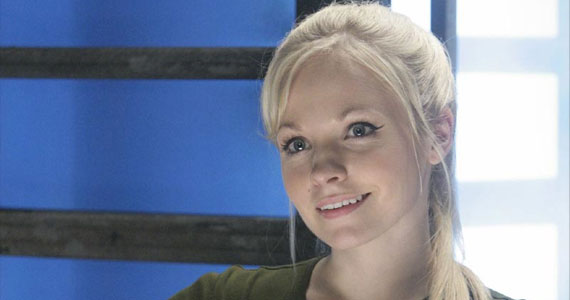Doctor Who: Kid Friendly
Has Doctor Who become more ‘kid-friendly’ under Steven Moffat? Doctor Who TV guest writer, Chris Todd, takes a look.
Not only has the actor playing the Doctor changed under Steve Moffat, but the tone of the show has as well. Whereas Russell T. Davies took the kissing incident in the 1996 movie and ran with it, contriving to have the Doctor kiss or be kissed by every companion (including Captain Jack), Moffat has turned that trope on its head by having the 11th Doctor go into a comic panic when Amy tries to make out with him. At her wedding, the Doctor passes up the traditional opportunity to kiss the bride and explicitly turns over the kissing to Rory. The only time the Doctor deliberately kisses Amy, he does so on the forehead, a gesture of almost fatherly affection. Moffat has not only brought back the idea of the show as a kid-friendly family program, but has turned the Doctor into a family man – literally.

While the first Doctor was called “Grandfather” by his original companion, Susan, it was never made explicit that their relationship was biological. In The Doctor’s Daughter he does gain a daughter, Jenny, created from his DNA by a machine. This prompts him to admit that he was a father once, but has lost his family along with the rest of the Time Lords. At the end of the episode, Jenny dies, but Moffat, who did not write the episode, interceded with Russell T. Davies to have her survive. So, thanks to the current showrunner, the Doctor is still a father to living offspring, although he doesn’t know it – yet.

Another feature of Moffat’s stories is that he frequently has the Doctor interacting with children. Nor are they merely incidental characters. Children figure prominently in his tales, which usually pivot around one remarkable child. Thus Jamie (and his mother, practically a child, as the Doctor points out) is the key to the events of The Empty Child/The Doctor Dances. In The Girl in the Fireplace, an entire spaceship is named after and focused on the titular character, Reinette, whom we first meet as a child. A little girl is the intelligence behind the Library in Silence in the Library. And the whole arc of the most recent season revolves around Amelia Pond, the girl who waited and whose memory helps the Doctor reboot the universe (and retrieve himself from non-existence).

Moffat also provides the Doctor with Professor River Song, a woman who calls him “Sweetie” and “my love,” whom he calls “Honey,” and whose relationship with the Time Lord strikes everyone as that of a married couple. It’s something Dr. Song does not exactly deny, nor does the Doctor rule out, though he is quite vocal on the fact that he and Donna are not a couple whenever others make that mistake.
It is tempting to speculate that the shift in emphasis is due to the fact that Moffat is married with children. Certainly his alter-ego Steve from “Coupling” seems to change at the end of Moffat’s sex comedy when his son is born. We know that the crack in time was inspired by a crack in the wall of the bedroom of Moffat’s son. It seems that the Moff has used his turn running Doctor Who to make it a show his children can watch, toning down the pan-sexuality of his predecessor’s term and making the Doctor a more avuncular character, like he was when Moffat was a child.








